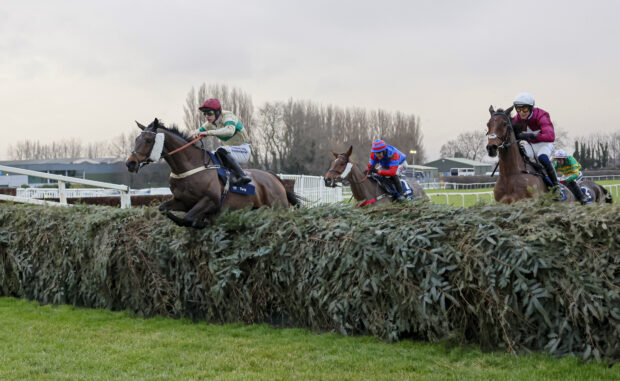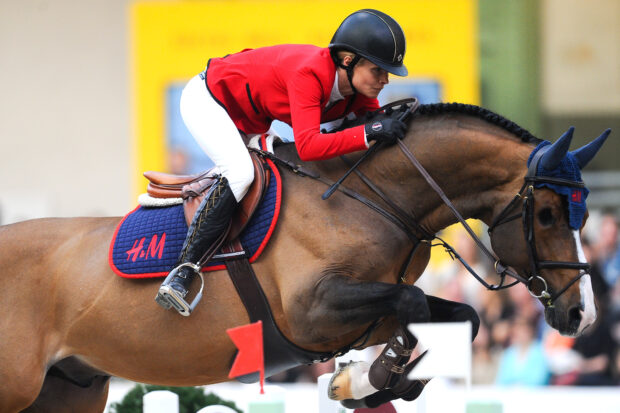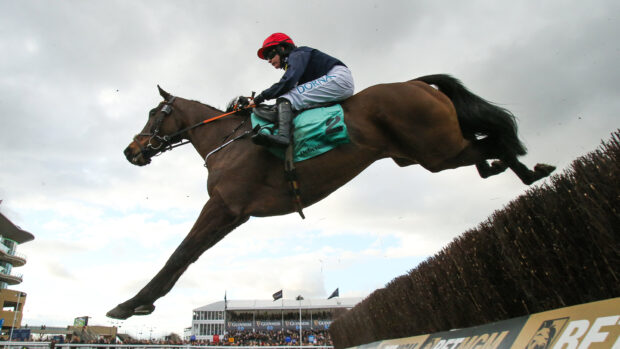In this exclusive extract from his forthcoming book, Ian Balding recalls the story of the greatest horse he ever trained, his only Derby winner, and one of the finest racehorses the world has ever seen
No one could have guessed that the small bay colt who arrived from America in the autumn of 1969 would turn out to be a star. Mill Reef was the name his breeder and owner Paul Mellon had chosen for him, after the luxurious club next door to his winter home in Antigua.
Of our many good stable lads in the yard at that time, there was one who impressed me enormously. His name was John Hallum, and Mill Reef and John were to forge a partnership which was as happy and intimate as any that I have known.
There are some two-year-olds who impress straight away. Some go on to give great performances on the racecourse, but all too often they turn out to be “morning glories”, never achieving on the racetrack what they show on the gallops.
There is only one horse I have handled who at once looked a champion at home and then turned out to be that and more on the racecourse.
One day in February 1970 all the two-year-olds were being exercised. I had told John, on Mill Reef, to lead his group and to go just that “half stride” faster. I noticed the beautiful, easy action as the horse lengthened his stride effortlessly up the hill, then saw the three colts behind him being pushed along fairly vigorously by their riders and seemingly getting further behind.
When John came back to me I rebuked him, repeating that I had told him to canter. I will always remember his reply: “Guvnor, I was only cantering.”
Mill Reef did his only serious gallop before his first race at Salisbury in May. About 10 days ahead, I arranged for him to gallop over four and a half furlongs with another colt of the same age.
The pair joined at the corner and I had asked John at that point to give his horse a good kick or even a slap down the shoulder for the first time to get him really to stretch out just this once.
The result was astonishing. Mill Reef opened up a gap that widened with every stride he took, and at the top he must have been at least 25 lengths clear of his companion.
It was not just the wide smile on John’s face afterwards that delighted me but the grim look on the second jockey’s as he said: “This one must be bloody useless or else that is a flying machine.”
When the stalls opened for Mill Reef’s first race, he flew out. He won unextended by four lengths and on dismounting, our jockey, Geoff Lewis, said to me, with a few of his usual stammers: “This is for sure the best horse you have ever had and I rather suspect he might be the best horse you will ever have!”
At Royal Ascot, Mill Reef looked magnificent and without ever coming off a tight rein he easily went eight lengths clear at the end.
History relates how My Swallow beat Mill Reef by a short-head in the Prix Papin at Maisons-Laffitte a month later. Geoff had felt that the rain-softened ground that day had not helped us. My view was that a restless journey to France and the unfavourable draw on the outside were more contributory factors.
A month after winning the Gimcrack at York by 10 lengths, Mill Reef won the Imperial Stakes at Kempton narrowly by a neck from a very good filly called Hecla in his least impressive performance to date.
I had always believed he was an out-and-out two-year-old performer and so his race-a-month programme was to end with the Group One Dewhurst Stakes over seven furlongs at Newmarket.
Mill Reef not only settled in behind his two opponents but went by them down the hill from the Bushes to win impressively by four lengths. To this day, however – biased as it may sound – I still feel that Mill Reef was the best two-year-old I have ever seen.
The following season Mill Reef had about three weeks’ cantering before starting faster work. He was naturally entered in the Derby, but whether he would stay a mile and a half or not at that stage was pure conjecture.
All went smoothly leading up to the race. After Tattenham Corner, Mill Reef never for a moment looked likely to be beaten or not to stay, and quickened well to score a clear, albeit not massively impressive victory.
There was, of course, a feeling of euphoria immediately afterwards; but to be honest my main sensation was one of intense relief. I was thanking God that between us we had managed not to screw up!
When the horsebox came back to Kingsclere that evening, Mill Reef’s many friends and admirers ran and walked beside it for the half mile to Park House to welcome our Derby winner. He strolled nonchalantly among them while everyone wanted to take photographs and pat him. That perhaps was the moment I really knew what it was to win the Derby.
On the last Wednesday of August 1972, there were just five and a half weeks left before Mill Reef would attempt to become the first horse since the mighty Ribot to win the Prix de L’Arc de Triomphe two years running; and I was excited because today our little superstar was to have his first serious piece of exercise for several weeks.
I had planned for Mill Reef and the others to use a piece of ground on Watership Down we called the “seven”.
We trotted for three or four hundred yards to a ring we used as a gathering place. While trying to watch them all, I naturally enough never let my eyes leave Mill Reef for more than a few seconds.
We had had innumerable setbacks with him ever since his last race, the Coronation Cup at Epsom in early June, when he had just scrambled home in front of Homeric. We knew now, but of course had not been aware then, that he had been harbouring a debilitating respiratory virus. Still, as he moved majestically round on his first canter I could not help thinking that at last he must have put his difficulties behind him.
Mill Reef followed his lead horse, Merry Slipper, at a good, strong canter. Both riders had instructions to quicken into what we call a half-speed gallop from the three-furlong pole.
I scarcely noticed Merry Slipper, but Mill Reef, with his lad John Hallum riding, was hard held about three lengths behind as intended. I thought again how superbly he was moving. They were the first pair to come up, and after they had gone on past me I turned contentedly to watch the next pair.
As these two in turn went by, my head swivelled gradually towards the top end of the gallop – and I saw a scene that caused my heart to miss a few beats. Mill Reef was standing on three legs with his lad John beside him, desperately trying to control him.
Oh My God, I don’t believe it, I thought, as I moved quickly to the middle of the gallop to stop the other groups. I can remember the anguish in John’s voice as he shouted, “Guvnor, I’m sure he’s broken his leg – I heard a terrible crack.”
I dispatched my mother-in-law, Priscilla, to summon a vet and to get our box driver. Mill Reef, with the adrenalin still pumping, was remarkably relaxed, picking grass and not even sweating. With gentle but forceful cajoling we pushed him on three legs a few yards across to the ramp of the horsebox.
In one of the bravest and most intelligent reactions I have ever seen from a racehorse, Mill Reef jumped virtually unaided halfway up the ramp and with our assistance somehow scrambled the rest of the way. The slow and painful journey down to the yard seemed interminable.
The vet, who was already waiting for us, was one of Peter Scott Dunn’s assistants, Barry Williams. Barry, who was 29 at the time, immediately gave the horse an intravenous painkilling injection before removing the bandages and examining the damaged foreleg. After gently rocking the joint and feeling all round the leg, Barry stood up, looked me in the eye and made the pronouncement which I have never forgotten: “It feels like a bag of marbles.”
My first task after the accident was to try to assemble the best veterinary brains to ascertain if and how Mill Reef could be saved. Jim Roberts, a pioneering surgeon, was confident that he could operate successfully.
I was aware that Roberts no longer had access to the fabulous operating facilities at the Animal Health Trust in Newmarket, and I felt strongly that there would be far less trauma for our patient if he did not have to be moved to a strange place. We had the perfect spot for the operation in our apprentices’ gym – and Mill Reef would only have to walk about 40 yards in his plaster cast. As a temporary hospital, it seemed a gift from heaven.
The operation basically entailed putting the fragmented piece of cannon bone back in place and securing it with a plate and three screws.
The surgeon was painstaking – in fact the whole operation lasted seven hours. I was totally fascinated and never left the horse’s side.
Not long after this marathon the patient came round – a potentially dangerous time because colts in particular may struggle; but Mill Reef as usual was sensible, and with a little help from us got up at the first attempt with the minimum of fuss.
Gradually, we gave him the whole area of the old mess room and it was to be Mill Reef’s home until he moved to the National Stud at Newmarket a few months later.
There was an interesting sequel to this operation. I had not fixed a price with Jim Roberts beforehand, either for the surgery or his later visits. For several months he did not send a bill and finally Paul Mellon asked me about it. It was not until a year after this amazing surgery that Jim Roberts finally sent the bill. By then we all knew that Mill Reef had got his first mares in foal.
The invoice on A4 paper just had one line on it:
To: saving Mill Reef’s life £25,000
I rang P.M. and said I felt the surgeon had taken an extortionate liberty; I had expected his charge to be a tenth of that figure. He listened to what I had to say and simply said, “Pay it.”
Trying to make Mill Reef walk properly and use his bad leg was very difficult. We also had to build up his near fore shoulder muscle, which had wasted quite badly during his inactivity.
We had fixed a date in early January for him to leave us for his new life at the National Stud. Finally, the day of departure arrived and our whole team assembled to watch him walk up into the horsebox for the last time. It was the end of an amazing era, and I was not the only one to shed a tear or two.



